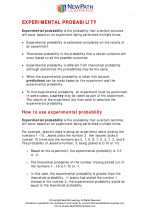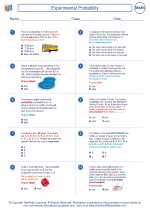Line Segment Study Guide
A line segment is a part of a line that is bounded by two distinct end points and contains every point on the line between its end points. Here are some key concepts and properties to understand about line segments:
Key Concepts
End Points: The two points that define the boundaries of a line segment.
Length: The distance between the two end points of a line segment. This can be calculated using the distance formula: d = √((x2 - x1)^2 + (y2 - y1)^2)
Properties
Collinearity: All the points on a line segment lie on the same line.
Midpoint: The point that divides a line segment into two equal parts. The coordinates of the midpoint can be found using the midpoint formula: ((x1 + x2)/2, (y1 + y2)/2)
Bisector: A line, ray, or segment that divides another segment into two equal parts. The segment joining the midpoint of a line segment is called its bisector.
Example Problems
1. Find the length of the line segment with end points A(3, 4) and B(7, 8).
Solution: Using the distance formula, we get: d = √((7 - 3)^2 + (8 - 4)^2) = √(4^2 + 4^2) = √(16 + 16) = √32
2. Find the midpoint of the line segment with end points P(2, 3) and Q(8, 5).
Solution: Using the midpoint formula, we get: ((2 + 8)/2, (3 + 5)/2) = (5, 4)
Practice Problems
1. Find the length of the line segment with end points C(1, 2) and D(9, 6).
2. Find the midpoint of the line segment with end points E(4, -3) and F(10, 7).
3. Given a line segment with end points G(3, 8) and H(11, 2), find the coordinates of a point that divides the segment into a 2:1 ratio.
.◂Math Worksheets and Study Guides Eighth Grade. Experimental Probability

 Worksheet/Answer key
Worksheet/Answer key
 Worksheet/Answer key
Worksheet/Answer key
 Worksheet/Answer key
Worksheet/Answer key
